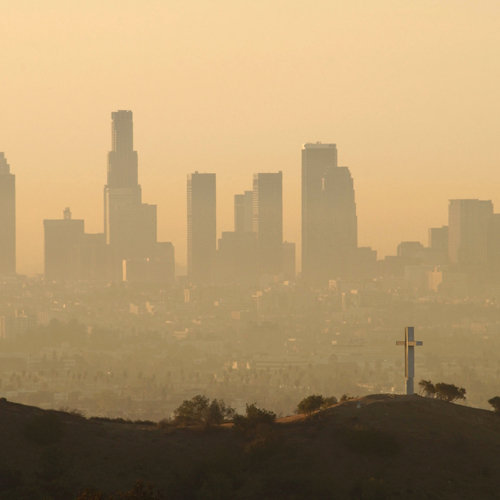
Air pollution, already a problem for much of central and southern California, will get worse as temperatures warm, according to a new report from scientists at UC Davis and UC Berkeley.
By mid-century, trouble spots like the Central Valley and Los Angeles could experience between six and 30 more days per year when ozone concentrations exceed federal clean-air standards, depending on how much temperatures rise, and assuming that pollutant emissions in the state remain at current levels, the scientists project.
Warmer conditions cause ozone levels to increase because hotter temperatures increase emissions from automobiles and the release of gases from plants. They also increase the rate of the chemical reactions that transform the raw emissions into ozone, said the study’s lead author Mike Kleeman of UC Davis.
The authors say the study provides evidence for the ozone “climate penalty,” which refers to the extra ozone that forms as a result of climate change.
“With climate change, we get increased ozone, which can have negative health effects,” said Kleeman. “The ozone climate penalty is the extra ozone that we have to offset with additional emission controls to offset the risk to public health.”
Previous studies have made the link between climate change and increased ozone, said Kleeman, but what’s new about this report is its attention to how climate change will affect airborne particulates, another component of air pollution, and the finding that, unlike ozone, there doesn’t appear to be a clear link.
“It’s not really clear what’s going to happen with climate change and airborne particulate matter,” said Kleeman. “We looked at temperature changes, humidity changes, wind speed changes, and precipitation changes, and it’s still not clear, but it looks like the effects on particulate matter will be small.”
This is in part due to the fact that climate change is predicted to increase average wind speeds across the state, and stronger winds decrease particulate matter concentrations, especially along the coast. However, Kleeman said, the study did find evidence that in the Central Valley, the worst particulate pollution days may get even more severe in the future because even though average wind speeds are expected to increase, the study results suggest that future peak concentration days may have lighter winds than they do under present conditions. Kleeman says that would worsen conditions on the extreme pollution days.
One factor contributing to airborne particulate matter that the study did not consider is fire. Wildfires are projected to intensify as the state grows warmer and drier. “It’s possible that wildfires could be the major impact of climate change on particulate air pollution in California,” said Kleeman.
The study was supported by the California Air Resources Board.
“We already know that climate change will bring us increased forest fires, shorter winters, hotter summers, and impact our water supply,” said Board chair Mary Nichols in a press release announcing the study. “Now we have scientific evidence that higher temperatures are hurting our lungs, too.”
One thought on “Another Climate Change Impact: Smog”
Comments are closed.

At what point do we say that high temperatures are not simply normal temperature variations and instead are part of overall global warming?
There can be very hot summers or very cold winters. These don’t necessarily indicate global climate change.